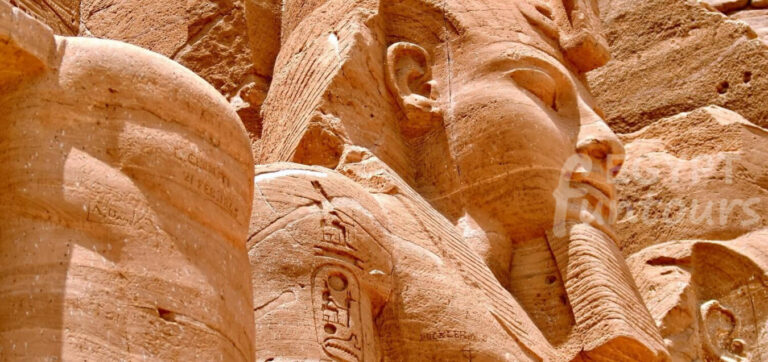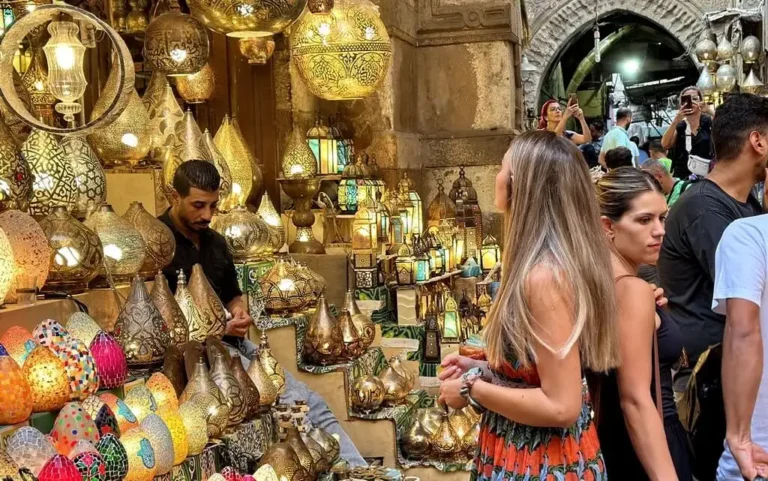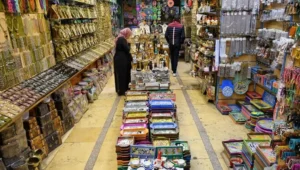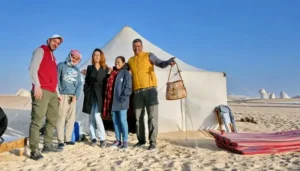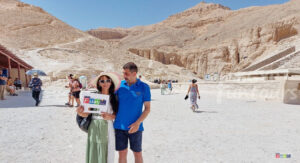A Guide to Exploring the Alleys of Cairo’s Oldest Bazaar
Khan el-Khalili is more than just a market; it’s a living piece of Cairo’s history. Located in the heart of Islamic Cairo, this ancient bazaar has been a center of trade and culture since the 14th century. The moment you step into its narrow, winding alleys, you’re transported back in time, surrounded by the sights, sounds, and smells of a bygone era.
Khan El Khalili: The History Behind the Walls
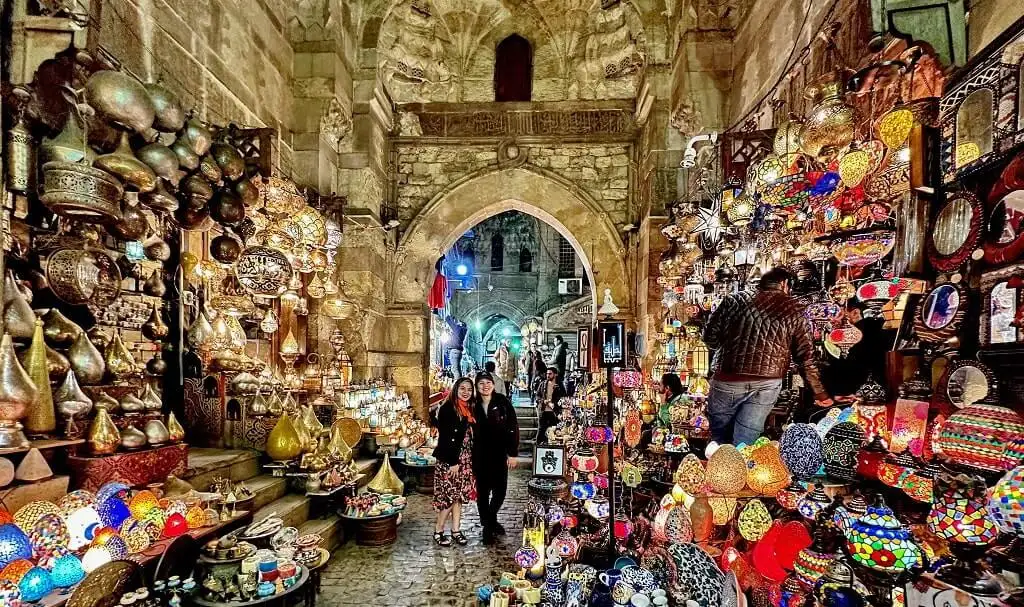
The bazaar’s history begins in 1382. That year, Emir Djaharks el-Khalili built a caravanserai for merchants at this site. This establishment became the foundation of the modern bazaar. Over the centuries, it thrived and expanded. It became a major hub for global trade. Its location made it an ideal center for commerce, and its architecture reflects centuries of Mamluk and Ottoman influence.
A Fascinating and Dark Past: Beyond the spices and textiles, the bazaar has an unusual history. For centuries, mummified remains were sold here. The remains, often ground into a powder called “mummia,” were a medicinal remedy exported to Europe. The practice has long since stopped. However, this surprising fact highlights the bazaar’s enduring role as a global trade center for all kinds of goods, both common and bizarre.
Practical Tips for Your Visit
Exploring the bazaar is an adventure, but a little planning can help. It is generally open from 9:30 AM to late in the evening. The best time to visit is in the morning or late afternoon to avoid the midday heat and the largest crowds. Getting there is easy. You can take the metro to Ataba Station, which is a short walk from the entrance. Alternatively, taxis and ride-sharing services can drop you off near the Al-Hussein Mosque, a key landmark right next to the market.
Khan El Khalili: A Feast for the Senses
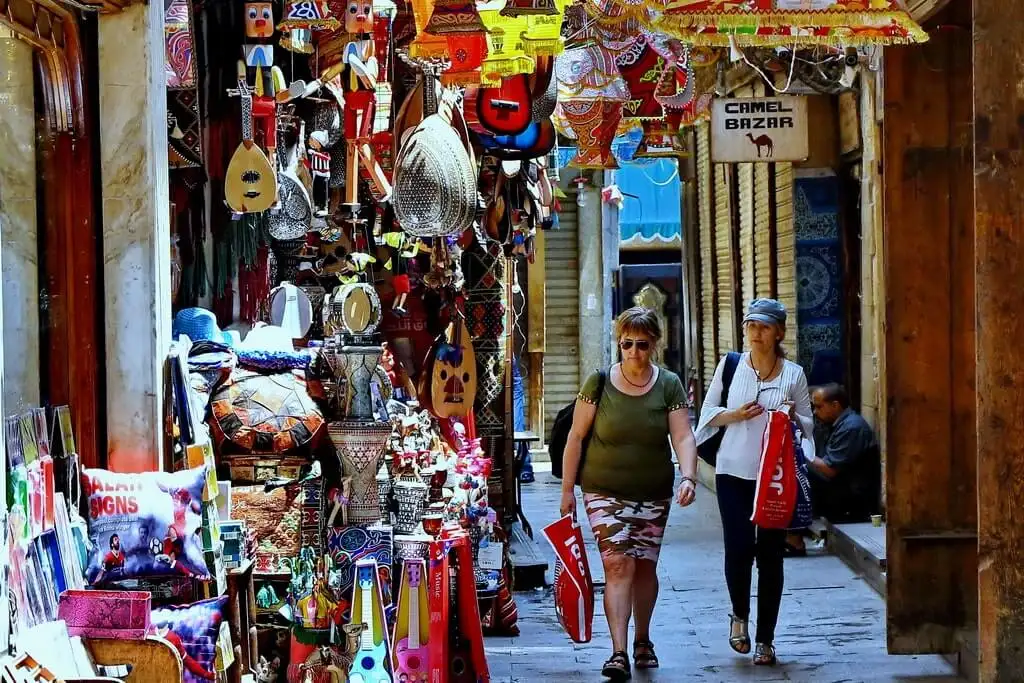
The experience of exploring Khan el-Khalili is a feast for the senses. The air is thick with the scent of spices, eastern perfumes, and freshly brewed tea. The sounds of vendors haggling, craftsmen hammering copper, and the call to prayer from nearby mosques fill the air. Every corner reveals a new visual delight, from colorful lanterns and intricate metalwork to vibrant textiles and shimmering gold jewelry.
Finding Your Way: What to Explore and Buy
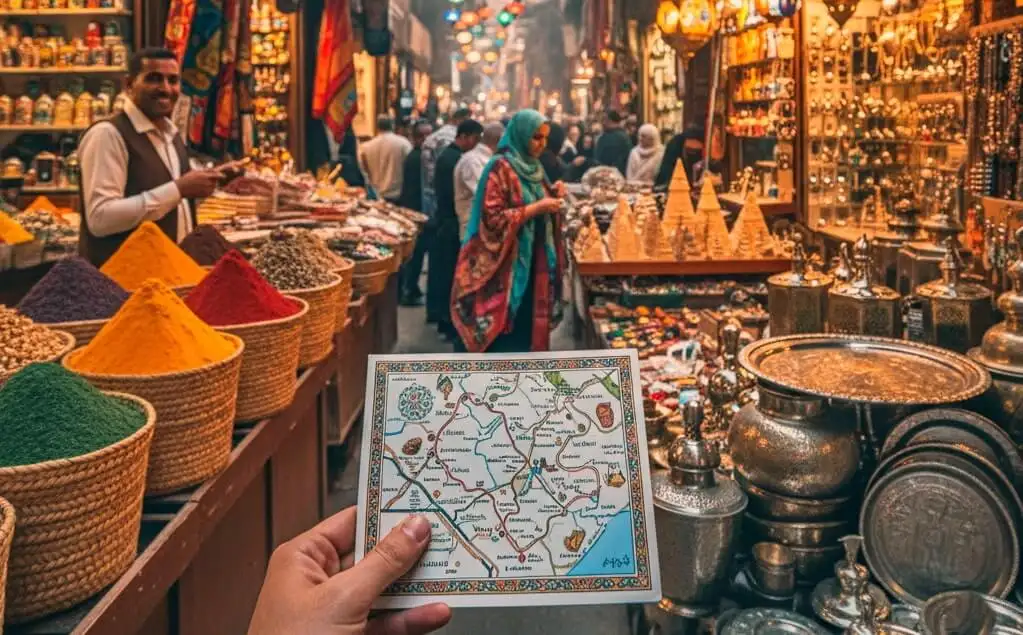
The bazaar is a maze of specialized sections. You can wander through alleys dedicated to different crafts and goods.
- Spices and Perfumes: Head to the Spice Bazaar for a vibrant array of herbs and spices. The Perfume Street offers traditional Egyptian scents and handmade oils.
- Metalwork and Jewelry: Discover finely crafted brass lamps, copper trays, and handmade silver and gold jewelry. Look for items with intricate Islamic geometric patterns.
- Textiles and Leather: Browse shops filled with embroidered jalabiyas (traditional Egyptian garments), scarves, and genuine leather goods. Be sure to check for handmade items versus mass-produced souvenirs.
- Souvenirs: You’ll find a wide range of souvenirs, including papyrus paintings, alabaster carvings, and hand-painted pottery. For papyrus, check for authenticity by ensuring it does not crack when rolled.
The Art of the Bargain in Khan El Khalili
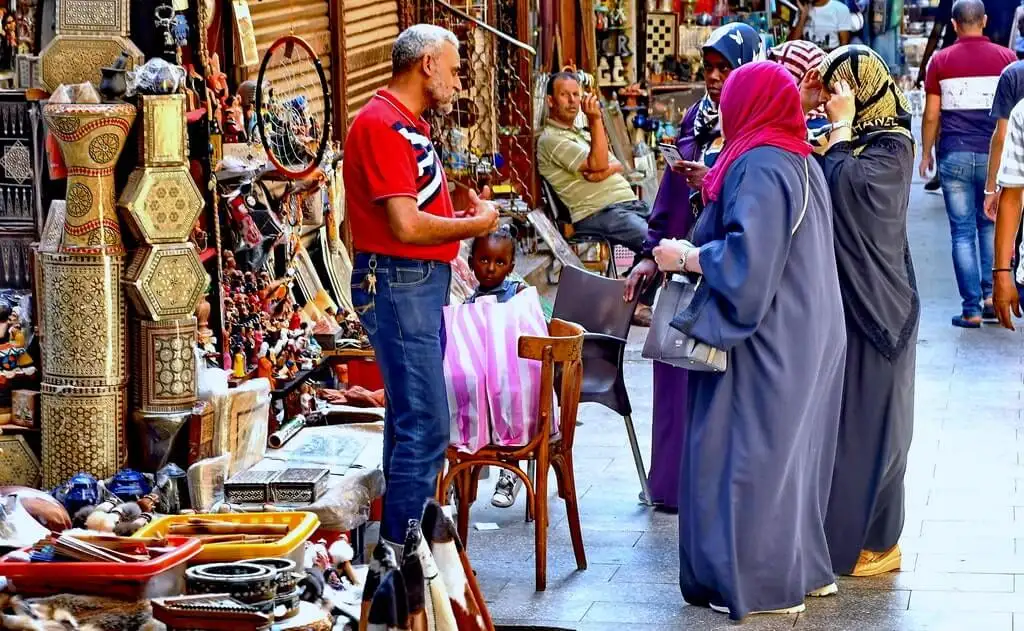
Haggling is a key part of the Khan el-Khalili experience. It’s a friendly and playful art form, and vendors expect you to negotiate prices. Remember to start with an offer of about 50% of the asking price and work your way up. It’s not just about getting a good deal; it’s about the interaction and the fun of the exchange.
A Taste of History
Beyond the shopping, the bazaar is home to some of Cairo’s most famous historic cafes. The most renowned is El Fishawy Cafe, a legendary coffeehouse that has been open for more than 200 years. It’s the perfect place to take a break, sip a cup of mint tea or strong Turkish coffee, and simply soak in the atmosphere. For a bite to eat, try traditional dishes like koshary at one of the many local restaurants, or indulge in sweet desserts like basbousa and konafa from a street vendor.
Exploring the alleys of Khan el-Khalili is an essential part of any Cairo trip. It’s a chance to experience the city’s living history and to connect with the traditions and daily life that are at the heart of modern Egyptian culture. To truly embrace these customs, it’s helpful to understand local etiquette, such as tipping. For a comprehensive overview of this and other practical advice, be sure to check out the Egypt Travel Guide, the largest travel guide in the world.

